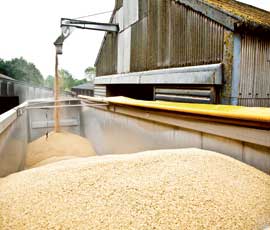Less than a third of winter barley meets spec

Less than a third of winter malting barley samples are testing below 1.85% nitrogen, with almost half of the crop exceeding 1.95%.
“Maltsters have altered their specifications and taken as high a nitrogen as they can, but they now need low nitrogen barley to bring that average down,” said Stuart Shand, director at Gleadell Agriculture.
Many had been taking barley in at up to 2% nitrogen, but would not commit to buy forward at that level.
“There is also quite a big requirement for barley for real ale that is below 1.6% nitrogen, and only 5% of the samples we’ve tested can meet that.”
Overall, winter barley was probably averaging 1.95% nitrogen, compared to 1.85% in a normal year, said Mr Shand.
Spring barley was more promising, with Tipple averaging 1.76% nitrogen across the UK.
About 15% of Gleadell’s Tipple samples were testing above 1.95% nitrogen, with 70% below 1.85% and a quarter below 1.65%.
Although real ale manufacturers preferred winter barley, they could switch to spring barley, and would have to, to bring nitrogen levels down, he added.
“The problem is that there isn’t enough to go around.”
Merchants had already sold the UK’s forecast 250,000t exportable surplus before harvest began, and were now having to buy those contracts back to meet UK demand.
With such tight supplies, malting barley premiums had risen to £40-£50/t over feed for winter barley, with springs at about £55/t.
Anything testing below 1.6% was commanding a further £10-£15 on top of that.
“However, demand for beer looks to be down because of the poor summer, and at some point the malsters will buy enough in to become comfortable, and premiums will then come down” said Mr Shand.
Prices for the 2012 harvest were already attractive, at about £30/t over feed for winter barley and £40/t over for springs.

